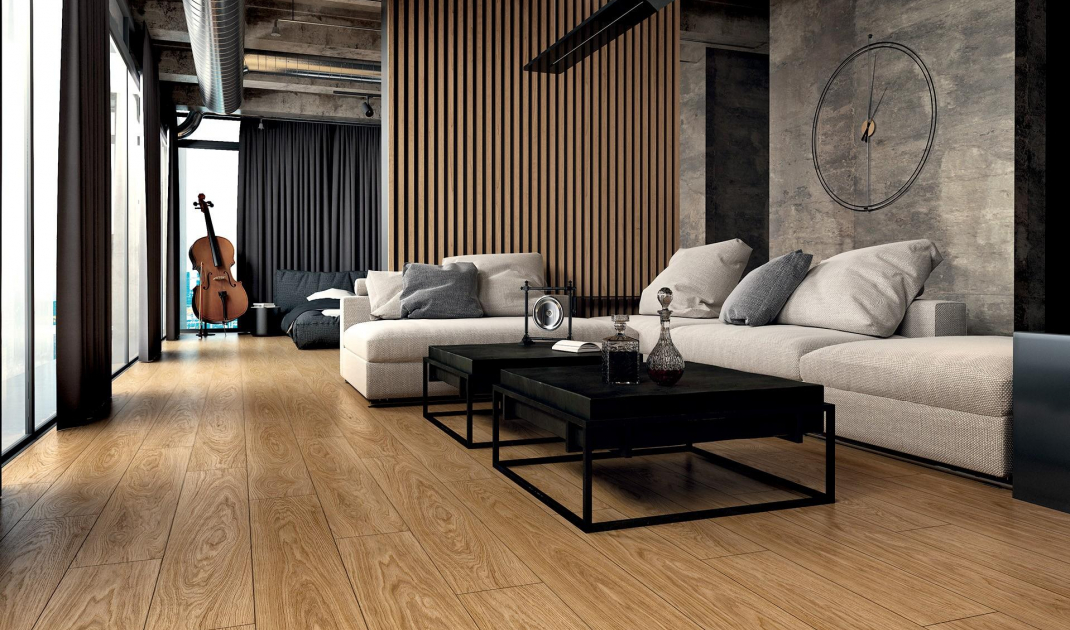Faced with summer temperatures, we tend to think about cooling rather than heating the house. Nevertheless, right now is the best time to plan investments that pay off in the colder weather. One of them is, which is very popular, the installation of wood on underfloor heating.
When using underfloor heating, choose a floor made of engineered material
© SWISS KRONO
The right material
Itis not recommended to install solid wood on underfloor heating. Why? This raw material is characterized by high thermal resistance, which makes heating uneconomical and inefficient. At the same time, solid wood is more susceptible to wood "work" than engineered, or layered, material. The latter is formed by combining several layers of wood (whose grain is arranged perpendicular to each other) into a single, permanent element. Such construction significantly reduces the "work" of the wood. At the same time, the layered construction does not significantly inhibit the flow of heat. Floors made of engineered material are more resistant to changes in humidity and temperature. Layered material should not be regarded as a limitation: it is available in as rich a selection of colors and sizes as solid wood. You can choose not only planks, but also staves and floor coffers.
Layered material is the best choice for underfloor heating
© SWISS KRONO
The right parameters of wood
Choosing a layered material is not everything, you also need to check its parameters. Contrary to appearances, the thickness of the wood itself is not decisive here. According to DIN 4725, materials whose thermal conductivity value does not exceed 0.15 m2K/W (meter to square -Kelvin/Watt) can be installed on water underfloor heating. Under the term "thermal conductivity resistance" is hidden the degree of insulation of a given material: the lower it is, the more heat will be conducted through the material. You should look for materials with the lowest possible value of this coefficient. However, the value of thermal resistance is influenced not only by the thickness of the wood, but also by its thermal conductivity coefficient, which expresses the thermal insulating properties of the raw material. The higher its value, the more heat will flow through the raw material.
Solid wood cannot be used with underfloor heating
© Arbiton
Substrate preparation
Wood is a hygroscopic material, reacting to the conditions in its environment, so it is important to remove moisture from the screed before installing natural wood floors. Skipping this important step will result in rather costly consequences. It is most convenient to get rid of moisture from the subfloor before it is absorbed by the wood. The described activity is called the process of warming up the floor. The purchaser along with the floor receives a relevant document (protocol), with instructions on the temperature in the room where the floor is to be installed. It is enough to follow these instructions for about 30 days and heat the floor thoroughly. The process itself needs to be documented in the protocol, often an integral part of the floor warranty.
Before installing the floor, you need to properly prepare the substrate
© SWISS KRONO
Experienced installer
It is best to entrust the installation to a parquet installer. Only an expert will be able to assess the preparation of the subfloor, such as the moisture content of the screed. For this you need not only knowledge, but also appropriate tools. When working with such a noble material as wood, experience is essential. In this regard, you also need to remember to scrupulously read the floor manufacturer's instructions and suggestions and, for your own good, follow their recommendations on how to store the boards before installation, the installation itself, as well as the use of the system and floor care.
Pay attention to the parameters of the wood
© Arbiton
Heating season
With underfloor heating, the room slowly reaches the right temperature, but also releases heat more slowly. It is important to remember that too high temperatures dry out the wood, and abrupt and large fluctuations can lead to damage. For this reason, it is important that both at the beginning of the heating season and at its end, the temperature should be raised successively, by a maximum of 1 or 2 degrees per day. The room temperature should not exceed 28 degrees Celsius. Given that the entire floor heats up, there is no concern that the room will be too cold. The optimal temperature level is in the range of 18-22 degrees. The humidity, on the other hand, should be between 45 and 60 percent. These conditions will also ensure the comfort of all household members.
Looking for information on floor finishes? Take a look here
































